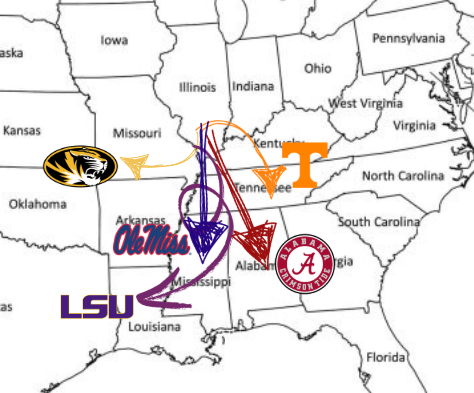To Mask Or Not To Mask?
August 27, 2021
The cafeteria dins with unfiltered voices, the hallways hold nearly as many covered chins as mouths, and yet in classrooms an air of caution persists.
This year as students return to school, little remains of the harsh realities of the pandemic and, despite the relief of this normality, our situation dictates one question: Is this right?
Early this month, the school board released District 7’s cautionary plan, being mandatory masking, with a catch. EHS students can remove masks in the cafeteria and hallways.
While the board’s intent to play to both sides is clear, the future effect is far from it.
Monday had over 9,000 new cases in Illinois, slightly lower than November, 2020 according to the New York Times. And, regardless of this marginal difference, delta adds another concern.
According to the CDC, the variant is doubly as infectious, possibly causes more severe sickness and produces similar levels of virus in the vaccinated and unvaccinated.
Our position is comparably precarious to last year at the height of restriction, yet now the district choses to drop precaution.
This choice presents further miscalculation: why take precaution in classrooms if students are free, or forced, to wade through waves of potential super-spreaders in hallways and lunch lines?
The decision seems odd, particularly in light of the development of the new strain, which makes the vaccinated majority just as dangerous as the not. In their attempt at neutrality, the district has lost sight of the point of masking at all.
Masking is the reasonable, empathetic response to our situation. Yet it seems as if, for the good the current mandate does us, a more efficient use of effort would be to drop the indiscretion.
In effect, the board’s choice has made precaution redundant, and a glance at Facebook proves the attempt at neutrality fell dead as well.
Many online pages and groups are filled with angry descent against the decision, sporting complaints that devolve into three key points: Masks affect breathing, vocalization and comfort.
The first two are easily dismissed:
According to the Mayo Clinic, “There is no risk of hypoxia, which is lower oxygen levels, in healthy adults.” This sentiment has also been published by the CDC, UC San Diego, and Harvard.
For vocalization, a University of Illinois study backed by the US Department of Energy found that the average disposable surgical masks offer good protection while sacrificing little volume.
So wear the right mask, not gaiter, and maybe see a doctor if you’re actually having trouble breathing.
As for the latter complaint, maybe masks are uncomfortable, but the discomfort seems negligible compared to the promise of safety for not only oneself, but friends, teachers and family.












